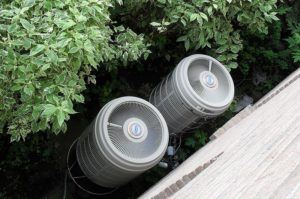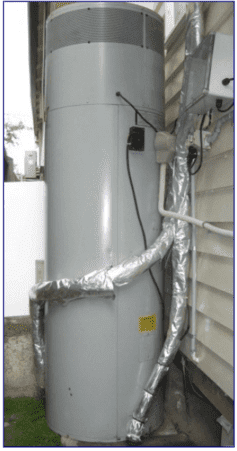 When the sun shines at its brightest, many of Australia’s 1.3 million homes with rooftop photovoltaic (PV) solar panels generate more electricity than they use. When this happens, excess electricity is exported to the grid.
When the sun shines at its brightest, many of Australia’s 1.3 million homes with rooftop photovoltaic (PV) solar panels generate more electricity than they use. When this happens, excess electricity is exported to the grid.
In the old days (say, about 2009), most householders would be pretty happy with this, given that in Victoria, for example, it would have earned them up to 60 cents per kilowatt hour exported.
But these premium feed-in tariffs have now been slashed to as low as 6 cents or less. Meanwhile, householders might pay 30 cents per kilowatt hour or more to buy electricity from the grid when their solar panels are dormant in the evening.
Unsurprisingly, many solar panel owners are wondering how they can avoid giving electricity away cheaply to retailers. Maximising the use of electricity in the home while the sun shines is one strategy, but there are only so many times each day you need to run the dishwasher!
The alternative is to try and store energy for later use, by buying either a home battery system or an electric car. However these can be pricey, and on pure economic terms this tactic may not yet add up. There is, however, an economic energy storage option that many householders may not have considered.
Water works
A major energy demand in any home (often around 20%) is for hot water. Most Australian homes have gas-fired, electric-resistive, or rooftop solar thermal water heaters. But gaining in popularity, given its now favourable economics and lower environmental footprint, is the hot water heat pump.
Hot water and space-heating heat pumps work like fridges and air conditioners. They use a refrigeration cycle to pump heat “uphillâ€Â, from a colder zone to a warmer one. The benefit we enjoy with fridges and air conditioners is the cooling that occurs when heat is pumped from somewhere we don’t want it (such as from our lounge room on a hot summer’s day) to somewhere else (the air outside). For hot water heat pumps, it’s the other way around – we want to gather and use the ambient heat that is always present in the air outside our homes – the way that a reverse-cycle air conditioner does when it is on heating mode.
The best hot water heat pumps can capture up to 3.5 times as much heat energy from the air outside as they use in electrical energy, meaning that the resulting tank of hot water represents a net gain of free renewable energy.
Already in Australia, more than 184,000 homes have hot water heat pumps, which are eligible for renewable energy certificates.
Making hot water stack up
So, on to the economics for the homeowner. If you currently heat your water using gas, and you already have solar panels that generate excess electricity that you sell back to the grid for little benefit, a hot water heat pump could be a very worthwhile investment – especially if your current hot water system is due for replacement or has a poor energy star rating.

Having bought a hot water heat pump, your best strategy would be to activate it in the middle of the day when the sun is strongest. The system will heat water and store it in a tank for later use, not unlike how electricity is stored in a battery.
Now, rather than selling excess solar power back to the grid for a pittance, you are using that electricity to heat water more cheaply than you can by using gas or using electricity after dark. This change could boost the value of your excess electricity by at least five times.
How are these economics possible? As occurred with electricity, the price of gas is going up. According to my most recent gas bill, I now pay the equivalent of 8 cents per kilowatt hour (or A$22 per gigajoule, in gas industry terms).
Gas now costs more (per equivalent unit of energy) than what electricity retailers will pay you for excess solar power. More importantly, when we consider that a gas hot water heater might only be 70% efficient at transferring the heat of the burned gas to the water, whereas a heat pump can effectively be 450% efficient when capturing renewable heat from the outside air, this easily tips the balance.
How much spare solar electricity do I need?
One important question is how much excess solar power is needed to supply a home with hot water. According to a recent report by the Alternative Technology Association and earlier work by Beyond Zero Emissions and the University of Melbourne Energy Institute, the answer is around 3.5 kilowatt hours per day, for a typically sized home.
In many Australian locations, a 1 kilowatt solar system would be enough to provide this amount of electricity and heat your water. However, given that the average new rooftop solar system is now around 4.5 kilowatts, there may well be plenty of excess solar electricity generating capacity available on many homes.
Here’s a bottom line: instead of paying around A$400 per year for gas to heat water, someone with a large rooftop solar system might instead use their excess home-generated electricity, which their retailer values at just A$80 per year. The result is that the homeowner is better off by A$320 per year.
This analysis ignores the up-front cost to replace a gas hot water heater with a hot water heat pump. But before your hot water system is on its last legs, it would pay to give this idea some thought.
![]()
Tim Forcey, Energy Advisor, Melbourne Energy Institute, University of Melbourne
This article was originally published on The Conversation. Read the original article.










